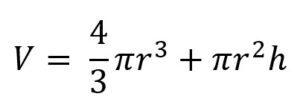Combine vs Intersect in SOLIDWORKS
Utilizing multibody parts is a SUPER helpful workflow to help in the modeling of complex shapes. Multibody parts can be used in multiple ways. One common command for multibody parts in Combine. This feature allows us to add bodies, subtract one body from another, or only keep the common volumes of the overlapping bodies. There is also a command called Intersect, which can do many of the same operations that Combine can; so when and why would we use Combine vs Intersect?

Combine
First, let’s talk about Combine. The Combine feature is a Boolean operation. This means that SOLIDWORKS looks at the multiple bodies selected, the operation desired and calls the operation either true or false, on or off, 0 or 1. It is using simple logic more than it is using any underlying math.
Intersect
Intersect can do all the things that the Combine tool can do… plus more. Intersect tells you where volumes (or reference geometry) are overlapping or touching and allows you to click to remove certain sections graphically. It is a little more intuitive to use than Combine AND it allows for multiple different types of operations to be done at the same time, add, subtract, common, or even creating entirely new bodies from internal volumes!
This is definitely a very powerful tool, but with all that power, comes longer rebuild times. If Combine is the simple Boolean 1=1 or 0≠1, then Intersect is more like the actual underlying volumetric math being written out and evaluated.
Something like:

From this analogy, it is clear Combine will be faster, while Intersect will have more capability.
Showdown
As a quick test, we’ll pit Combine vs Intersect against one another by using Performance Evaluation.
Using the Combine – Add command; we end up with this geometry… and the Combine feature is the least of my performance problems, taking a whooping 0.00s to render according to my Performance Evaluation.


Now, replace the Combine operation with an Intersect operation.


As you can see, it is the exact same resultant geometry that we had with the Combine – Add command… but look at the performance. The Intersect operation is now the biggest issue I have in terms of performance, clocking in at 0.05s to render. Of course, this example is simple geometry, but the issue will compound the more complex the part is.
In short, use the Combine command wherever possible to maintain short rebuild times. Intersect is there for you when you have those more challenging problems like creating internal volume or using reference geometry/surfaces to split or trim a part. If you’d like to take a closer look at Intersect and all its different use cases, check out this blog.
Happy Modeling!
Kit MacDonald
Application Engineer
Computer Aided Technology

 Blog
Blog